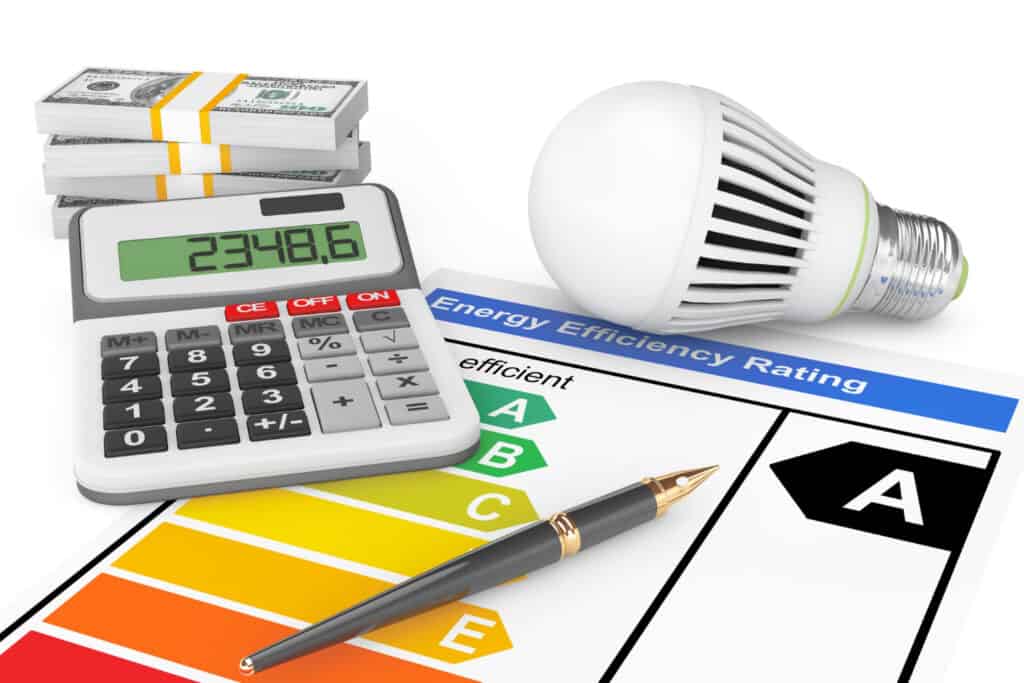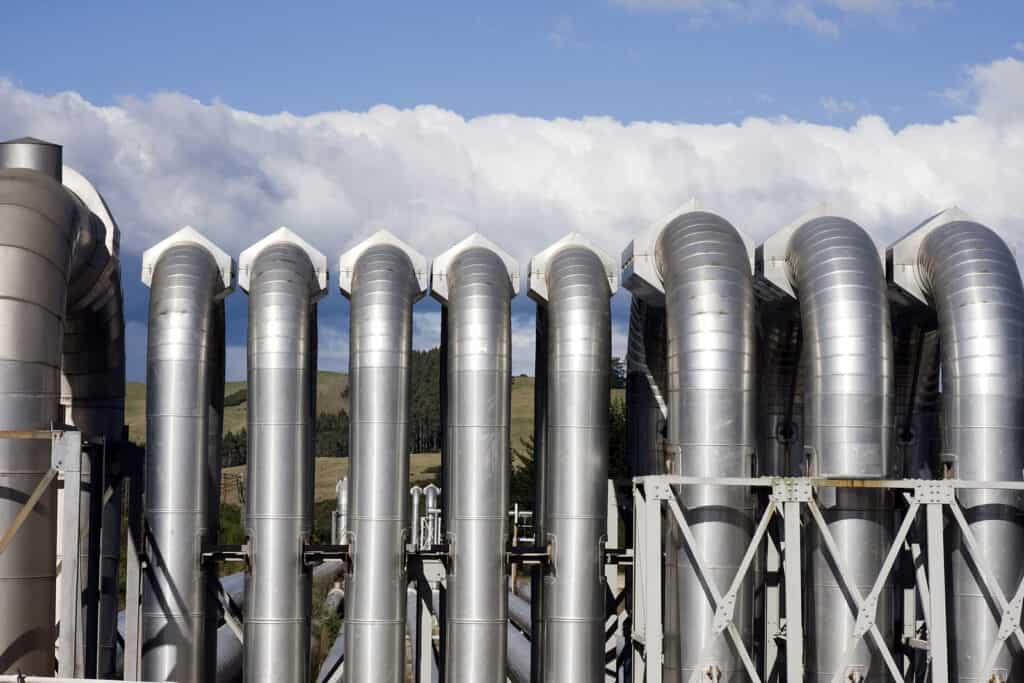In the landscape of renewable energy incentives, the Geothermal Energy Tax Credit 2024 emerges as a pivotal opportunity for homeowners, businesses, and investors alike.
This guide delves deep into the nuances of the tax credit, elucidating eligibility criteria, benefits, application processes, and how to maximize its potential.
Geothermal energy, with its promise of sustainability and efficiency, has never been more accessible, thanks to the Geothermal Energy Tax Credit 2024.
Understanding the Geothermal Energy Tax Credit 2024
The Geothermal Energy Tax Credit 2024 is a financial incentive designed to encourage the adoption of geothermal energy systems.
By offsetting a portion of the installation and operational costs through tax credits, it aims to make geothermal energy a more attractive investment for those looking to reduce their carbon footprint and energy bills.
What is Geothermal Energy?
Before delving into the specifics of the tax credit, it's crucial to understand what geothermal energy is. It's a form of renewable energy harvested from the earth's natural heat.
This can include heat found beneath the earth's surface, in hot water reservoirs, or molten rock. Systems that utilize this energy can heat and cool buildings or generate electricity with minimal environmental impact.

Key Features of the Geothermal Energy Tax Credit 2024
The Geothermal Energy Credit 2024 offers several benefits that make it a significant incentive for potential adopters:
- Financial Benefits: A percentage of the cost of installing geothermal heating and cooling systems is returned to the taxpayer in the form of a tax credit.
- Eligibility: The credit is available to both residential and commercial properties that install eligible geothermal energy systems.
- Sustainability: By incentivizing geothermal systems, the tax credit supports environmentally friendly energy solutions that contribute to reducing greenhouse gas emissions.
- Extended Duration: The Geothermal Energy Credit 2024 has been designed with multi-year applicability, ensuring that adopters can plan and implement their geothermal projects without rushing to meet a short deadline, thereby making the investment more manageable and less stressful.
- Incremental Savings: In addition to the initial tax credit, the savings on energy bills over time can significantly offset the cost of installation. Geothermal systems are highly efficient, leading to lower energy costs that complement the tax savings.
- Increased Property Value: Properties equipped with geothermal heating and cooling systems often see an increase in market value. This improvement is seen not only as a direct benefit of the geothermal system itself but also as a result of the growing demand for sustainable and energy-efficient homes.
- Federal and State Compatibility: The Geothermal Energy Credit 2024 is designed to work alongside additional state and local incentives, allowing for even greater savings when combined with other programs.
- Flexible Application: The tax credit can be applied to various types of geothermal installations, including new constructions and retrofits, making it accessible to a wide range of projects and increasing its applicability across different scenarios.

Eligibility Criteria for the Geothermal Energy Tax Credit 2024
To qualify for the Geothermal Energy Tax Credit 2024, there are specific criteria that must be met. These include:
- Installation Date: The geothermal system must be installed within the specified time frame to be eligible for the tax credit.
- System Requirements: Only certain types of geothermal installations qualify for the credit. These typically include ground source heat pumps that meet specific energy efficiency criteria.
- Ownership: Applicants must own the property and the geothermal system to claim the credit.
- Certification and Standards Compliance: The geothermal heating and cooling system must meet certain certification standards, such as those set by the EPA or the DOE ensuring that the systems are efficient and environmentally friendly.
- Primary Residence Requirement: For residential properties, the tax credit is often more readily available to those installing the geothermal system in their primary residence.
- Tax Liability Consideration: The applicant must have sufficient federal tax liability against which the credit can be claimed, as the Geothermal Energy Tax Credit 2024 is a non-refundable credit that can only reduce or eliminate a taxpayer's owed federal taxes.

Maximizing Savings with the Geothermal Heat Pump Energy Credit
The Geothermal Heat Pump Energy Credit represents a significant opportunity for homeowners and businesses looking to reduce their energy costs and environmental impact.
Investing in geothermal heat pump systems offers an energy credit, reducing upfront costs and promoting renewable energy adoption.
This initiative supports sustainable energy solutions through fiscal policies, benefiting property owners with lower energy expenses and a smaller carbon footprint.
A Detailed Applying for the Geothermal Energy Tax Credit 2024
Securing the Geothermal Energy Tax Credit 2024 can lead to substantial savings for those investing in geothermal energy systems.
This detailed, step-by-step guide aims to simplify the application process, ensuring you fully understand and can navigate each phase effectively. From preliminary planning to the final submission of your tax credit claim, here's what you need to know:
Step 1: Preliminary Assessment and Planning
Before anything else, conduct a thorough assessment of your property to ensure it's a suitable candidate for a geothermal energy system.
This involves understanding the geological, spatial, and environmental characteristics of your property.
Consulting with a geothermal energy expert or a company specializing in these systems can provide valuable insights into the feasibility and expected benefits of such an installation.
- Research: Start by gathering information on geothermal energy systems, focusing on how they work, the types available, and their benefits.
- Consultation: Reach out to experienced geothermal installation companies for an initial consultation. They can offer preliminary assessments and quotes, giving you a clearer idea of the potential costs and savings.

Step 2: Choosing a Qualified Installer
Selecting the right installer is crucial for ensuring your system qualifies for the Geothermal Energy Tax Credit 2024.
Look for installers with certifications from recognized industry organizations, and check their track record for installing geothermal systems.
- Certification and Experience: Verify the installer's certifications and ask for case studies or references from previous installations.
- Quotations: Obtain detailed quotes from multiple installers, ensuring they include all potential costs and specify the systems that meet the tax credit's eligibility criteria.
Step 3: System Installation and Meeting Eligibility Criteria
Work closely with your chosen installer to ensure that your geothermal system installation adheres to all the necessary standards and regulations to qualify for the tax credit.
This includes selecting eligible equipment and ensuring proper installation techniques.
- Eligible Equipment: Confirm that the geothermal heat pump system meets the Energy Star program requirements or other specified standards that qualify for the tax credit.
- Installation Process: Monitor the installation process to ensure it complies with local building codes, permits, and the specific eligibility requirements of the Geothermal Energy Tax Credit 2024.
Step 4: Documenting the Installation Process
Maintaining comprehensive documentation of the installation process is essential. This documentation will serve as proof of eligibility when you apply for the tax credit.
- Invoices and Receipts: Keep all financial records related to the purchase and installation of the geothermal system, including invoices, receipts, and bank statements.
- Certifications and Warranties: Secure and file any certifications regarding the energy efficiency of your system, as well as warranties and guarantees provided by the manufacturer and installer.
Step 5: Applying for the Tax Credit During Tax Filing
When it's time to file your taxes, you'll need to claim the Geothermal Energy Tax Credit 2024 using the appropriate tax forms. This is where detailed records of your installation and costs become crucial.
- Tax Forms: Identify the specific tax forms required to claim the credit for renewable energy installations. For most taxpayers, this will involve IRS Form 5695 (Residential Energy Credits) or a corresponding form for commercial properties.
- Professional Consultation: Consider consulting a tax professional or accountant who is knowledgeable about energy tax credits. They can provide guidance on filling out the forms correctly and maximizing your tax benefits.
Step 6: Submitting Your Tax Return
With all the necessary documentation and forms at hand, complete your tax return, attaching any required documentation related to the Geothermal Energy Tax Credit 2024. Ensure that every piece of information is accurate and that you've calculated the credit correctly.
- Double-Check: Review your tax return and attached forms to ensure that all information is accurate and complete.
- Submission: Submit your tax return by the filing deadline, keeping a copy of everything for your records.

Exploring Geothermal Energy Rebates: Boosting Affordability and Accessibility
Geothermal energy rebates lower costs for installing eco-friendly heating and cooling systems, making them more accessible.
By offering geothermal energy rebates, governments, and utility companies acknowledge the role of geothermal solutions in achieving energy independence and environmental sustainability.
Homeowners and businesses considering the transition to geothermal energy are encouraged to explore available geothermal energy rebates in their area, as these incentives can substantially reduce installation expenses, leading to a quicker return on investment and long-term savings on energy costs.
The Future of Geothermal Energy and Tax Incentives
The Geothermal Energy Tax Credit 2024 highlights the growing importance of geothermal energy in the renewable energy sector.
It shows the recognition of geothermal technology's potential in fighting climate change, improving energy security, and promoting sustainable economic growth.
The future of geothermal energy looks promising with advancements in technology, more investments, and a stronger commitment to sustainable energy sources.
Technological Advancements in Geothermal Energy
Advancements in technology are key for the future of geothermal energy. Innovative drilling, EGS, and heat pump tech will make geothermal more accessible in new areas.
As costs decrease, geothermal will become more competitive with traditional and renewable energy sources, leading to global expansion.
Expanding Incentives and Policies
The Geothermal Energy Tax Credit 2024 is just the beginning of a global push for incentives and policies to promote geothermal energy adoption.
Governments plan to offer financial incentives, regulatory support, and research funding to accelerate the sector's growth and signal commitment to renewable energy.
Increasing Awareness and Adoption
With increased awareness and education, geothermal energy is expected to see widespread adoption in residential, commercial, and industrial sectors. Users are drawn to its cost savings, reliability, and environmental benefits.
This shift is crucial for combating climate change, improving air quality, and ensuring a sustainable energy future.
The Role of International Collaboration
Global climate change requires international cooperation in developing and using renewable energy, such as geothermal. By working together on research, funding, and technology transfer, countries can speed up geothermal energy progress.
International organizations will help by promoting collaboration, setting standards, and advocating for policies that encourage global geothermal energy use.
Geothermal Energy Tax Credit 2024 Conclusion
The Geothermal Energy Tax Credit 2024 offers a unique opportunity to invest in geothermal energy, a sustainable and efficient renewable energy source.
By understanding and taking advantage of this tax credit, individuals and businesses can contribute to a greener future while enjoying significant financial benefits.
The key to unlocking these advantages lies in thorough preparation, eligibility awareness, and strategic planning. As the world moves towards more sustainable energy solutions, incentives like the Geothermal Energy Tax Credit 2024 play a crucial role in facilitating this transition.
